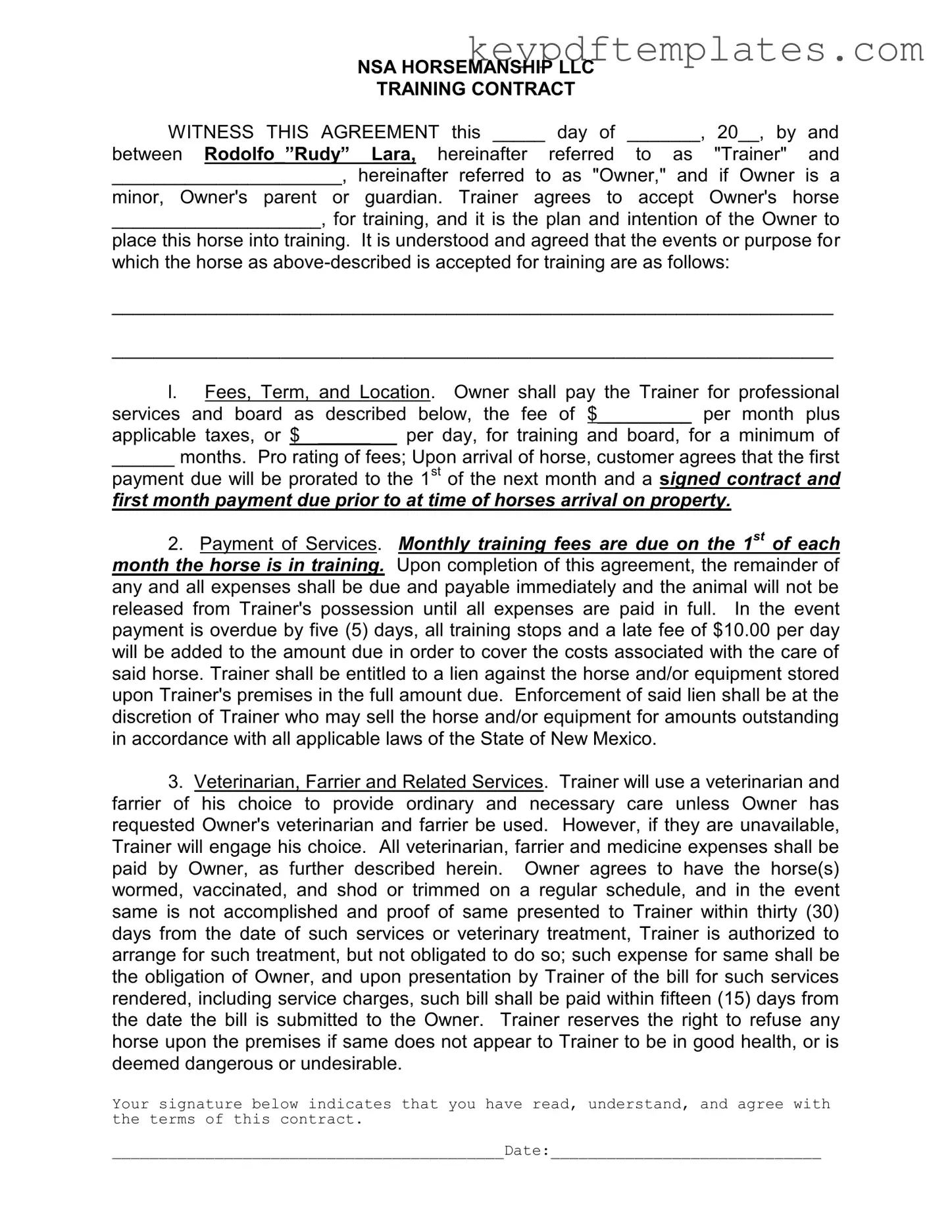Misconception 1: The Horse Training Contract guarantees specific results.
Many people believe that signing a training contract guarantees certain outcomes for their horse. However, the contract clearly states that the Trainer cannot promise specific results. The effectiveness of training depends largely on the individual horse's physical and mental abilities.
Misconception 2: The Trainer is responsible for all veterinary and farrier costs.
Some owners think that the Trainer will cover all expenses related to veterinary and farrier services. In reality, the contract specifies that the Owner is responsible for these costs. The Trainer will use their preferred service providers unless the Owner requests otherwise.
Misconception 3: The Trainer is liable for any injuries or losses that occur during training.
It is a common misunderstanding that Trainers are liable for any injuries or losses. The contract states that the Trainer is not liable for sickness, theft, or injury unless there is negligence involved. Owners must accept the inherent risks associated with equine activities.
Misconception 4: Owners can remove their horse at any time without consequences.
Some owners believe they can take their horse out of training whenever they want. The contract requires a thirty-day notice for termination and may include an early termination fee. This ensures that both parties are treated fairly and that the Trainer can manage their schedule effectively.
